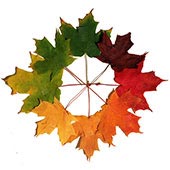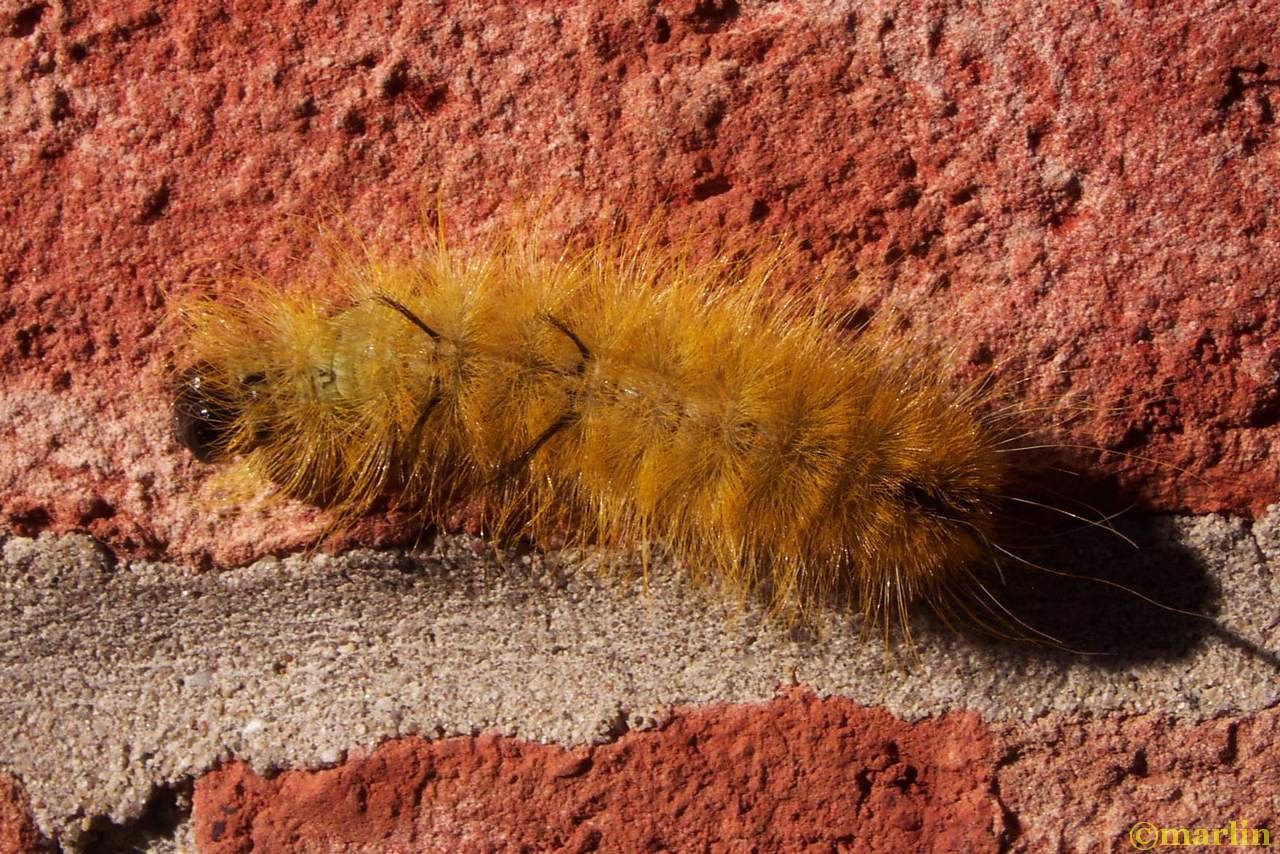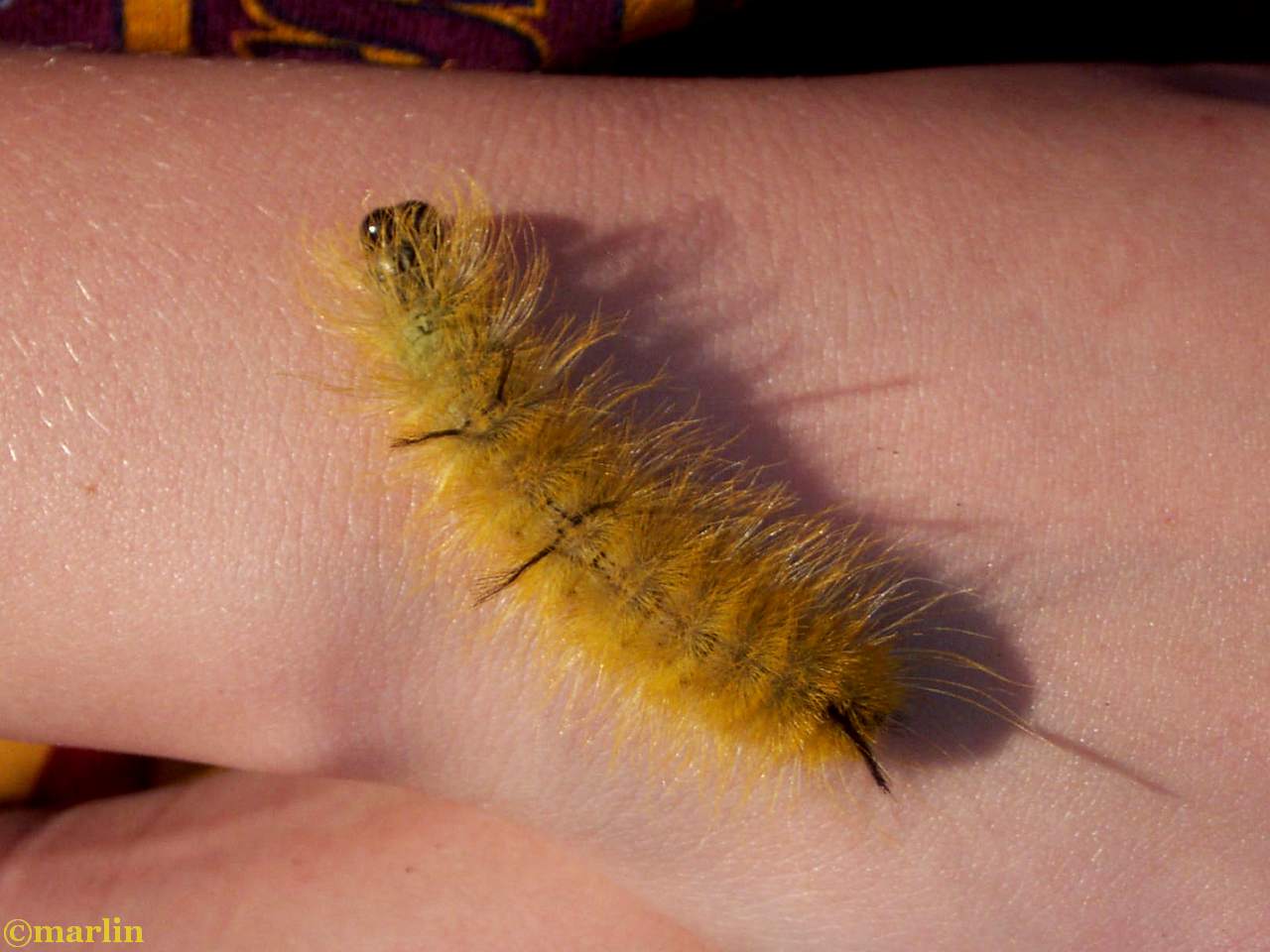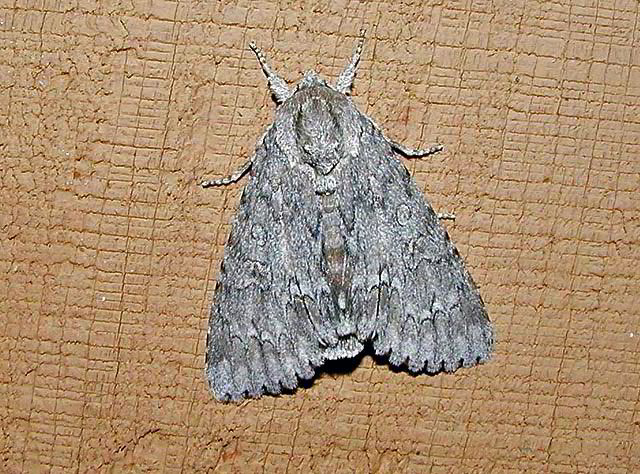American Dagger Moth
Dagger moth larvae feed on leaves of alder, ash, birch, elm, hickory, maple, oak, poplar, walnut, willow and other deciduous trees. Caterpillar is moderately large, densely clothed in long white or yellowish setae of variable length; long, paired black lashes on first and third abdominal segments and unpaired medial lash on eighth segment. Head black. June to October; 2 generations in South, 1 in North. – – U.S. Department of the Interior U.S. Geological Survey
Hodges#9200. Family: Noctuidae (cutworm moths). The young caterpillar is densely covered with yellow setae. The older caterpillar’s setae are either pale yellow or white. All instars have thin, black setae on the first and third abdominal segments. On the eighth abdominal segment, there is one tuft of black setae. The caterpillar will reach a length 50 mm (2.0 in).
The American dagger moth has a wingspan of 50 to 65 mm. It is gray to gray-brown with darker markings. It usually has a sharp, double postmedian line, with white in between the two lines. There is a black dash on the anal area of the fore wing. The hind wing is gray with a faint, darker gray median line in the male. The female is similar, except the hind wing is completely dark.
This moth is found in North America east of the Rocky Mountains, and can be seen from April to September throughout its range. Caterpillars crawl around beginning in July all the way through late October.
Order Lepidoptera: Moths. Unlike the butterflies, moths are usually nocturnal. Many moths and their caterpillars are major agricultural pests in large parts of the world. Moths in the family Tineidae are commonly regarded as pests because their larvae eat fabrics, clothes and blankets made from natural fibers such as wool or silk. Moths in the genus Farinalis feed on stored grain, flour, corn meal and other milled grain products.



